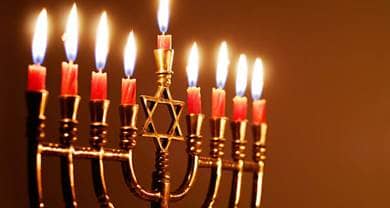- Trending:
- Pope Leo Xiv
- |
- Israel
- |
- Trump
- |
- Social Justice
- |
- Peace
- |
- Love

RELIGION LIBRARY
Judaism
Beginnings
 The traditional view of Jewish origins is based on the patriarchal narratives found in the Hebrew Bible. These narratives reflect an attempt by the ancient Israelites, the ancestors of the Jewish people, to trace the birth of their nation to one family that began to distinguish itself from those of other ancient near eastern cultures through the worship of one God. Although these texts were written about a thousand years after the events described, they are an outgrowth of the myths associated with the historical origins of a people passed down orally through the generations.
The traditional view of Jewish origins is based on the patriarchal narratives found in the Hebrew Bible. These narratives reflect an attempt by the ancient Israelites, the ancestors of the Jewish people, to trace the birth of their nation to one family that began to distinguish itself from those of other ancient near eastern cultures through the worship of one God. Although these texts were written about a thousand years after the events described, they are an outgrowth of the myths associated with the historical origins of a people passed down orally through the generations.
These narratives associate the origin of Judaism with Abraham, a nomadic herder who entered into an unconditional covenant with God based on two interrelated  divine promises of unlimited progeny and possession of the land of Canaan. The narrative then sets out to chronicle the trials and tribulations of this clan, depicting a continual conflict over who will be the promised heir to the covenant, with the younger son always prevailing. First there is a conflict between Abraham's wife Sarah and her maidservant Hagar over their sons Isaac and Ishmael. Ultimately it is Isaac who perpetuates the Abrahamic covenant symbolized by his miraculous birth by the elder and infertile Sarah, while Ishmael becomes the father of another great nation later associated with Islam.
divine promises of unlimited progeny and possession of the land of Canaan. The narrative then sets out to chronicle the trials and tribulations of this clan, depicting a continual conflict over who will be the promised heir to the covenant, with the younger son always prevailing. First there is a conflict between Abraham's wife Sarah and her maidservant Hagar over their sons Isaac and Ishmael. Ultimately it is Isaac who perpetuates the Abrahamic covenant symbolized by his miraculous birth by the elder and infertile Sarah, while Ishmael becomes the father of another great nation later associated with Islam.

The narrative later recounts the story of the twin brothers Jacob and Esau who engage in a sibling rivalry over who will receive their father's birthright, with the slightly younger and clever Jacob outsmarting the dim-witted oaf Esau by deceiving his senile father with the help of his mother, Rebecca. This common "disqualification" motif is more than just a literary tool; it is also an historical justification of Israel's self-acknowledged status in history as a youthful nation that has the divine right to conquer the land of the stronger and more established Canaanite cultures.
 Ultimately it is Jacob who acquires the name Israel, "one who wrestles with God," through his mysterious encounter with an angel, and it is he who becomes the father of twelve sons who are the eponymous ancestors of the twelve tribes of Israel. These tribes ultimately form the nucleus of the Israelite nation that enters into a conditional covenant with God predicated on the divine redemption of the Israelites from Egyptian bondage and contingent upon Israel's continued observance of God's commandments. This national covenant further confirms the promises made by God to Abraham in his familial covenant.
Ultimately it is Jacob who acquires the name Israel, "one who wrestles with God," through his mysterious encounter with an angel, and it is he who becomes the father of twelve sons who are the eponymous ancestors of the twelve tribes of Israel. These tribes ultimately form the nucleus of the Israelite nation that enters into a conditional covenant with God predicated on the divine redemption of the Israelites from Egyptian bondage and contingent upon Israel's continued observance of God's commandments. This national covenant further confirms the promises made by God to Abraham in his familial covenant.

Later in the narrative, God enters into another unconditional covenant, this time pledging eternal support for the Davidic Kingdom based on David's prior fidelity. Yet because of the king's bloodstained past, he is not able to build the sacred house for God that he envisioned, but instead must cede the construction of the Holy Temple to his son Solomon.
 God's loyalty to David and his descendants is severely tested during the ensuing division of the kingdom into two commonwealths following the death of King Solomon: the northern kingdom of Israel and the southern kingdom of Judah. Despite its superior size, geographical position, and military strength, Israel would meet an earlier demise than that of Judah in 722 B.C.E. because of its political and religious instability. Yet Judah would not fare much better, facing its own demise in 586 B.C.E. with the destruction of the Holy Temple and ensuing exile, perhaps as a result of being squeezed by the two larger powers of Egypt and Babylonia and forced to switch political allegiances.
God's loyalty to David and his descendants is severely tested during the ensuing division of the kingdom into two commonwealths following the death of King Solomon: the northern kingdom of Israel and the southern kingdom of Judah. Despite its superior size, geographical position, and military strength, Israel would meet an earlier demise than that of Judah in 722 B.C.E. because of its political and religious instability. Yet Judah would not fare much better, facing its own demise in 586 B.C.E. with the destruction of the Holy Temple and ensuing exile, perhaps as a result of being squeezed by the two larger powers of Egypt and Babylonia and forced to switch political allegiances.

With the blessing of the Persian king Cyrus, many Judeans would come back to Jerusalem to rebuild their Holy Temple anew under the leadership of the priest Ezra in 516 B.C.E. The Sanhedrin, the original body of legal interpreters began to construct the rough outlines of what would later become rabbinic Judaism by instituting the oral tradition in 444 B.C.E., a collection of ongoing oral interpretations of the written Torah received by Moses at Mt. Sinai. The later Pharisees or "interpreters" of the 1st century B.C.E. would go further by claiming that one cannot understand the written law without consulting the parallel "oral law" that was also believed to be transmitted to Moses at Mt. Sinai by God.
The conquest of Alexander the Great brought the Persian era to an end in 333 B.C.E., ushering in the Greco-Roman period in which there was a process of Hellenization, or infusion of Greek culture into Judean society, reflected at the popular level with the introduction of a common language, dress, and schools. Yet Judean assimilation into Greek culture even occurred at the institutional level with different priestly families competing for the position of High Priest of the Jerusalem Temple based on how much tribute they could give the Ptolemaic and Seleucid kings of the Greek empire to sanction their office.
The worst offender was Menelaus who embezzled funds and stole sacred vessels from the Temple treasury to pay debts to the Seleucid King Antiochus, even dedicating the Jerusalem Temple to the Greek god Zeus. This political and religious corruption ignited a civil war between the Maccabee traditionalists and the Hellenized reformers, ultimately leading to the establishment of the Hasmonean dynasty, a brief return to autonomous Jewish self-rule. Yet the Judean political and religious infighting would continue through the 1st century B.C.E., when the Romans took over Judea and appointed Herod, an Idumean (from Edom) convert to be King and High Priest over the Judeans in 40 B.C.E.
During this period of extreme religious and political instability, the Pharisees were one of three major groups vying for the mantle of divine truth, separating themselves from the priestly Sadducees who denied the legitimacy of the oral law largely to preserve their own political and religious authority. The Essenes further distanced themselves from a Judean society that they saw as tainted by the material world, opting for an ascetic existence near the Dead Sea.
It was in this volatile mix of first century C.E. Judean subcultures that Jesus of Nazareth most likely lived and preached, demonstrating a clear affinity for the teachings of the Pharisees. Unfortunately this theological and discursive volatility contributed to social and political instability, which the Romans would not tolerate. This further Roman intervention in Judean society sparked the "Great Revolt" in the years 66-70 C.E., which catastrophically lead to the destruction of the Second Temple, exile, and the inevitable fragmentation of Judean culture.
The rabbis of the 2nd century attempted to fill the religious and political void left in the wake of the destruction by pragmatically introducing three changes in the Jewish worldview with both religious and political implications. First, they reinterpreted the oral law of their pharisaic predecessors by arguing that all future interpretations of the Torah were already transmitted to Moses at Mt. Sinai, thus legitimizing their new role as the authoritative interpreters of their generation. Next, they proclaimed that the age of prophecy had been replaced by Torah study, in effect democratizing Jewish communication to God. Finally, they taught that following the destruction of the Second Temple, God had actually gone into exile with God's people. In a sense, with the loss of Jewish power, God allowed divine power to somehow be diminished in order to suffer with the Jewish people, ultimately leaving room for the rabbis to assume a more active political as well as religious role in the world.
With these three innovations, the rabbis built a bridge between Judean culture and what became classical Judaism by preserving the Jewish connection to Israelite religion while at the same time extending it to further generations.
Study Questions:
1. Why is patriarchy important to Judaism's history?
2. What do Judaism's literary motifs reveal about its status?
3. What is the role of covenant in Judaism?
4. Who was Abraham? Jacob?
5. Describe the relationship between politics and the Jewish Temple.










